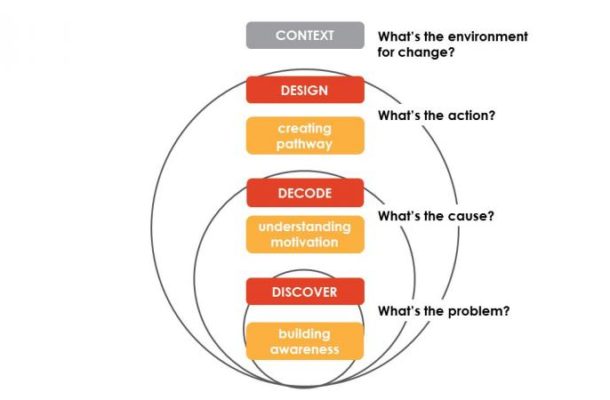Leadership is learnable

Leaders are born and not made. Right? Wrong!
Neural pathways in the brain reorganise in response to thoughts, experiences, behaviours and learning new skills. Scientific studies undertaken since the 1970s have established ‘neuroplasticity’ of the brain – the brain’s capacity to rewire and change throughout life.
One study found that 71 of 96 senior leaders improved leadership flaws enough to show a statistically significant improvement in their overall leadership effectiveness. The ability to influence the wiring of our brain creates inspiring possibilities for learning leadership.
You can teach an old dog new tricks!
Changing the brain’s structure involves creating new, or strengthening existing, neural connections and weakening and/or eliminating others. We are operating in a ‘VUCA’ environment where learning, unlearning and relearning needs to happen fast.
- Volatile: change happens rapidly and on a large scale.
- Uncertain: the future cannot be predicted with any precision.
- Complex: challenges are complicated by many factors and there are few single causes or solutions.
- Ambiguous: there is little clarity on what events mean and what effect they may have.
Leadership is learnable—an especially good thing in small to medium businesses. Supporting your people to learn leadership on the job, makes leadership development possible while still getting the work done, in a time-poor, competitive environment. Leadership is everyone’s responsibility and is fostered throughout the organisation. The most successful businesses don’t rely just on leaders in the traditional management hierarchy.
Why learn on the job?
Direct leadership development conversations are available to anyone, anytime, on the job (without time out of the office). It’s a case of real-time, targeted feedback conversations, in the moment. Nobel Prize winner and author, Daniel Kahneman said, ‘True intuitive expertise is learned from prolonged experience with good feedback on mistakes’. Leaders are in the best position to provide ‘good feedback on mistakes’, and to provide continued focus, reinforcement and support in real time, on the job, where it is most effective in today’s dynamic environment.
3 steps to learning leadership, on the job
Here is the 3D Development Model to support leadership learning, on the job.
- Discover– Build awareness of the need for change.
- Decode– Create insight and understanding of the underlying drivers causing the behaviour.
- Design– Agree on the pathway and actions required to create new behaviours.
Discover – what’s the problem?
Deciding what feedback to offer requires awareness of the behaviours and their resulting impacts. Awareness is important; it precedes and directs change, and creates motivation.
The 5 key ways to build your leaders’ self-awareness, on the job, are:
1. Questioning to expand their perspective.
2. Reflecting back observations.
3. Giving direct feedback.
4. Providing new information (articles, books, programs, etc.).
5. Encouraging self-reflection.
Decode – what’s the cause?
Creating insight and understanding of the underlying drivers of the behaviour is critical. Trying to change behaviours without addressing the underlying motivational drivers is like painting a car red and expecting it to go faster—changing the colour does not change the engine.
Conversations that help your people decode their motivational drivers, allows energy to be redirected into behaviour that better supports their intention. This is like lifting the bonnet of the car to help them understand how the engine works.
Design – what’s the action?
Once it’s clear what your people want to develop, you can collaborate with them to design their pathways for improved performance. With a learning plan in place, your role is to support them to stay the course, maintaining focus to repave neural pathways and stimulate learning.
| 12 Common Leadership Derailers
Identifying which derailers are impacting performance, and helping decode the intention motivating the behaviour, allows developmental action to be planned.
|
Context – the environment for change
The context for change is critical and must be understood. The environment in which leadership learning is undertaken will influence the approach and outcome — better leadership creates engagement and discretionary effort. Leadership is learnable, and the best way to support leadership learning is on the job.
Corrinne Armour is a leadership speaker, author, trainer and coach who helps leaders and teams get out of their own way and achieve their objectives. She is co-author of Developing Direct Reports: Taking the guesswork out of leading leaders.



